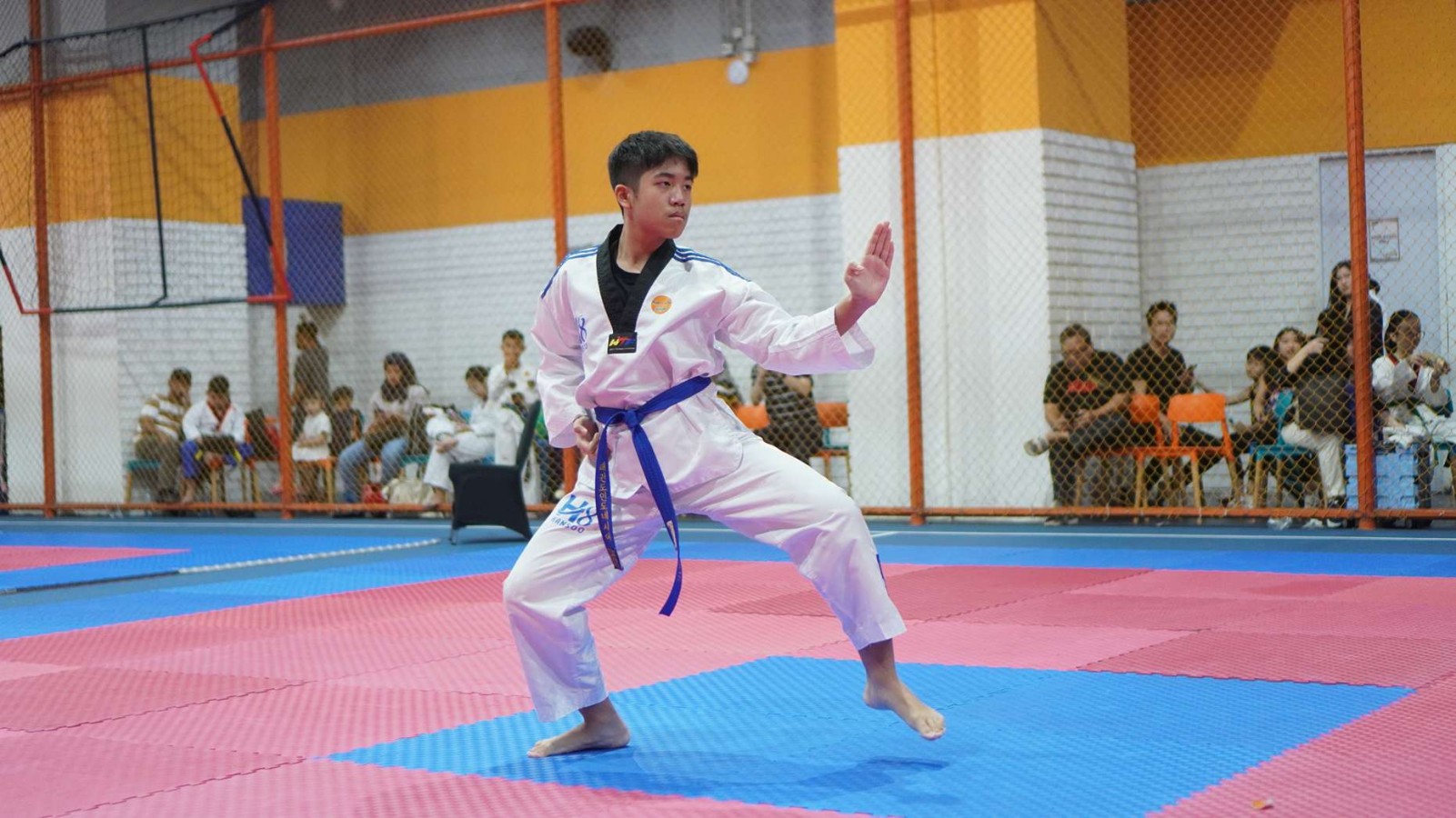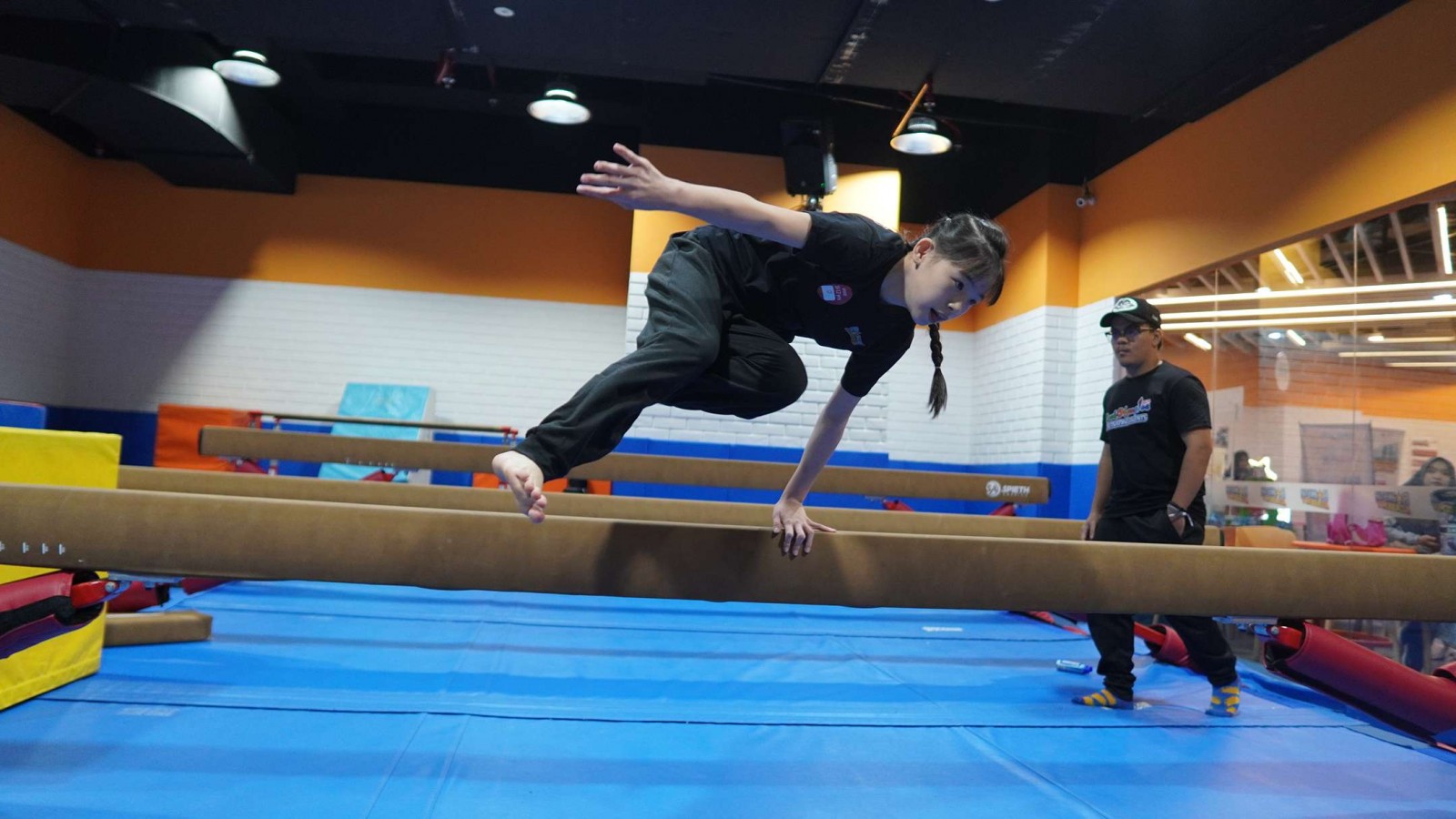A Complete List of ITF Taekwondo Patterns Moves

ITF Taekwondo is a martial art that emphasizes both physical fitness and mental discipline. One of the key components of ITF (International Taekwondo Federation) Taekwondo is the practice of patterns, also known as “tuls.”
These patterns are sequences of movements that represent different techniques, stances, and defenses against imaginary opponents. Each pattern has a specific meaning, often tied to Korean history, culture, or philosophy.
In this article, we’ll explore what ITF Taekwondo patterns are, their history, and provide a complete list of the 24 pattern moves.
What is an ITF Taekwondo Pattern?
ITF Taekwondo patterns are predetermined sequences of movements that practitioners memorize and perform. These movements include a variety of strikes, blocks, kicks, and stances, all of which are executed in a specific order.
Patterns are a fundamental aspect of ITF Taekwondo training and will impact the taekwondo scoring during competition, serving several purposes, such as:
A. Technique Practice
Patterns allow practitioners to practice and refine their techniques in a structured manner. Each move is performed with precision, focusing on form, balance, and power.
B. Mental Discipline
Memorizing and executing patterns requires concentration and mental focus. Practitioners develop their memory, coordination, and ability to concentrate on multiple tasks simultaneously.
C. Cultural Understanding
Each pattern has a specific meaning or story behind it, often related to Korean history or philosophy. Practicing patterns helps students connect with the cultural and philosophical roots of Taekwondo.
D. Progression and Grading
Patterns are often used as a benchmark for progression in Taekwondo. To advance to the next belt level, practitioners must demonstrate their ability to perform the required patterns with accuracy and confidence.
A Brief History of ITF Taekwondo Patterns
The ITF Taekwondo patterns were created by General Choi Hong Hi, who is considered the founder of Taekwondo. General Choi developed these patterns between 1955 and 1965 as part of his efforts to formalize Taekwondo as a distinct martial art.
He drew inspiration from traditional Korean martial arts, as well as his own experiences in karate and military training.
The 24 patterns in ITF Taekwondo are designed to symbolize the 24 hours in a day, representing the idea that Taekwondo is a lifelong practice. Each pattern has a unique name, usually associated with significant figures or events in Korean history.
For example, the pattern “Do-San” is named after the Korean independence activist Ahn Chang-ho, while “Hwa-Rang” is named after a group of elite warriors from the Silla Dynasty.
The 24 ITF Taekwondo Pattern Moves
Here is a complete list of the 24 ITF Taekwondo patterns, along with a brief description of each:
1. Chon-Ji (19 Movements)
Chon-Ji means "Heaven and Earth," which is the beginning of human history. This pattern represents the creation of the universe and consists of basic movements, including low blocks and punches.
2. Dan-Gun (21 Movements)
Dan-Gun is named after the legendary founder of Korea, Dangun. It emphasizes upward blocks and high punches, symbolizing Dangun's rise.
3. Do-San (24 Movements)
Do-San is named after the Korean patriot Ahn Chang-ho. It includes a series of hand techniques, such as knife-hand strikes and punches.
4. Won-Hyo (28 Movements)
Won-Hyo is named after the monk Won-Hyo who introduced Buddhism to Korea. It combines various stances, blocks, and strikes, focusing on balance and control.
5. Yul-Gok (38 Movements)
Yul-Gok is named after the philosopher Yi I, known as the “Confucius of Korea.” It incorporates a variety of techniques, including palm strikes and low stances.
6. Joong-Gun (32 Movements)
It is named after the Korean patriot An Jung-geun who assassinated Hirobumi Ito, the first Japanese governor-general of Korea. Joong-Gun emphasizes precise hand techniques and kicks.
7. Toi-Gye (37 Movements)
Toi-Gye is named after the neo-Confucian scholar Yi Hwang. It features a combination of hand strikes, blocks, and stances.
8. Hwa-Rang (29 Movements)
Hwa-Rang is named after the Hwarang youth group that originated during the Silla Dynasty. It includes a variety of high kicks and strikes, symbolizing the spirit of the Hwarang warriors.
9. Choong-Moo (30 Movements)
Choong-Moo is named after Admiral Yi Sun-sin, the naval hero who invented the first armored battleship. It combines fast and powerful techniques, including punches, blocks, and a jump kick.
10. Kwang-Gae (39 Movements)
It is named after Kwang-Gae-Toh-Wang, the 19th king of the Koguryo Dynasty. It features a combination of low stances and powerful strikes.
11. Po-Eun (36 Movements)
Po-Eun is named after the poet and scientist Chong Mong-ju. This incorporates a variety of hand techniques and stances, emphasizing balance and precision.
12. Gae-Baek (44 Movements)
Named after the great General Gae-Baek of the Baekje Dynasty, Gae-Baik includes a series of powerful hand techniques and stances.
13. Eui-Am (45 Movements)
Eui-Am is named after Son Byong Hi, the leader of the Korean independence movement. It combines fast and dynamic techniques, including strikes and blocks.
14. Choong-Jang (52 Movements)
Choong-Jang is named after General Kim Duk Ryang, who died in the 14th century. It emphasizes a combination of high kicks and hand techniques.
15. Juche (45 Movements)
Juche represents the philosophical idea that humans are the masters of their destiny. This incorporates a variety of dynamic and complex techniques.
16. Sam-Il (33 Movements)
Sam-Il commemorates the March 1st Movement of Korean independence. It combines powerful strikes, blocks, and stances.
17. Yoo-Sin (68 Movements)
Named after General Kim Yoo-Sin, a great military leader during the Silla Dynasty, Yoo-Sin features a variety of hand techniques, kicks, and stances.
18. Choi-Yong (46 Movements)
Named after General Choi Yong, a loyal commander during the Koryo Dynasty, this pattern emphasizes strong and dynamic techniques.
19. Yon-Gae (49 Movements)
Yon-Gae is named after the famous general Yon-Gae Somoon of the Koguryo Dynasty. It includes a series of powerful strikes and blocks.
20. Ul-Ji (42 Movements)
This pattern is named after General Ul-Ji Mun Dok, who defended Korea against the Tang Dynasty. It combines various stances and techniques, focusing on balance and precision.
21. Moon-Moo (61 Movements)
Moon-Moo ITF Taekwondo patterns is named to honor King Moon-Moo of the Silla Dynasty, who unified Korea. It incorporates a variety of dynamic and complex techniques.
22. So-San (72 Movements)
Named after the monk Choi Hyong Ung, who helped repel Japanese invaders, So-San emphasizes a combination of hand techniques, kicks, and stances.
23. Se-Jong (24 Movements)
Se-Jong is named after King Se-Jong, the creator of the Korean alphabet. This pattern combines a variety of powerful strikes and stances.
24. Tong-Il (56 Movements)
Tong-Il represents the reunification of Korea. It includes a series of complex and dynamic techniques, symbolizing unity and strength.
Want to Improve Your ITF Taekwondo Patterns?
Mastering the ITF Taekwondo patterns is an exciting journey that builds both strong bodies and sharp minds. If your kids are showing an interest in Taekwondo and want to level up their skills, why not enroll them in the martial arts program at Rockstar Academy?
It’s not just any academy but it’s the ultimate spot for Sports and Performing Arts, offering a range of awesome physical activity programs. Plus, they’ve got a curriculum that lets your kids shine at the Taekwondo Testing and RockOlympics, amazing experiences that help them discover their true potential.
And here’s the best part: Rockstar Academy also offers a free trial class! So if you’re curious, reach out to them and get your kids started on a fun and rewarding Taekwondo adventure!
FAQ
What is the purpose of practicing patterns in ITF Taekwondo?
Patterns serve multiple purposes, including refining techniques, developing mental discipline, and understanding the cultural and historical aspects of Taekwondo. They also play a crucial role in progression and grading within the martial art.
How many patterns are there in ITF Taekwondo?
There are 24 patterns in ITF Taekwondo, each with its own unique meaning and sequence of movements.
Can beginners learn all the patterns?
Beginners typically start with the simplest patterns and gradually learn more complex ones as they progress through the belt ranks. It takes time and practice to master all 24 patterns.
What do the names of the patterns mean?
The names of the patterns are often tied to significant figures or events in Korean.



